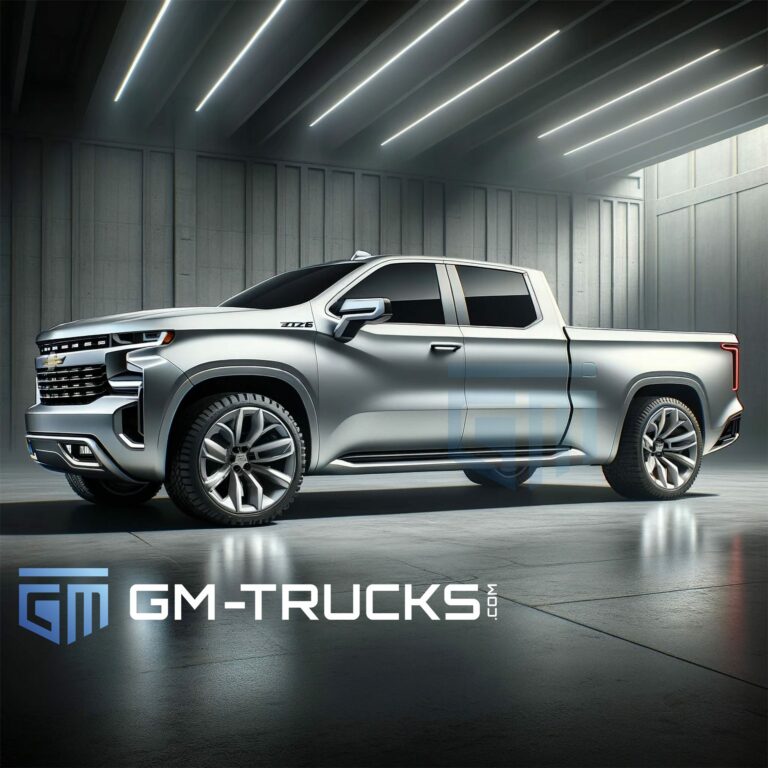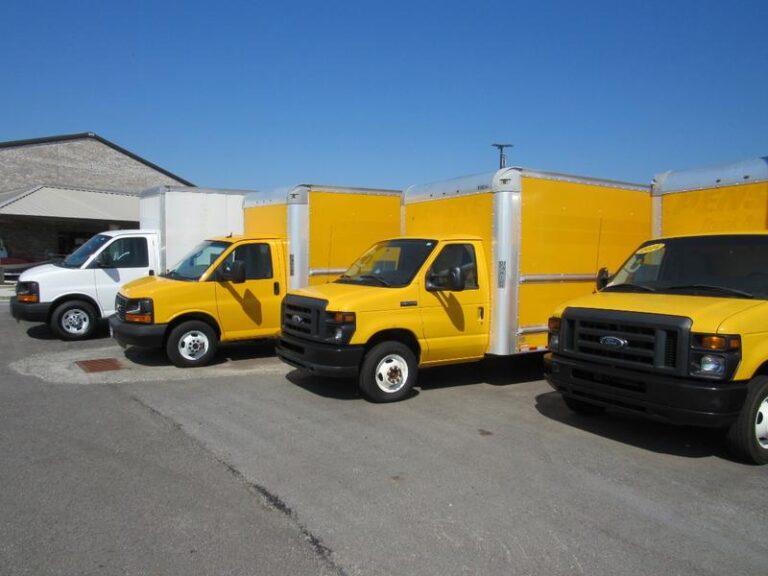Best Gas Truck Upgrades For Towing: Unleash Your Truck’s True Hauling Potential
Best Gas Truck Upgrades For Towing: Unleash Your Truck’s True Hauling Potential cars.truckstrend.com
Towing with a gas-powered truck is a common necessity for many, whether it’s for hauling a boat to the lake, a camper to the mountains, or equipment to a job site. While modern gas trucks are incredibly capable, pushing them to their limits, or even just regularly using them for heavy towing, can reveal areas where performance, safety, and longevity can be significantly improved. Stock components are designed for a broad range of uses, but when specialized tasks like heavy towing become a regular occurrence, targeted upgrades can transform your truck from merely "capable" to truly "exceptional."
This comprehensive guide will delve into the best gas truck upgrades for towing, providing you with the knowledge to enhance your vehicle’s power, stability, braking, and overall towing experience. Investing in these areas not only makes towing safer and more comfortable but also extends the life of your valuable asset.
Best Gas Truck Upgrades For Towing: Unleash Your Truck’s True Hauling Potential
1. Engine & Drivetrain Performance: Unleashing Towing Power
When it comes to pulling heavy loads, horsepower and torque are your best friends. These upgrades aim to optimize your truck’s ability to generate and transfer power efficiently.
- Performance Tuners/Programmers: This is often the most impactful first step for a gas truck. Tuners rewrite your truck’s Engine Control Unit (ECU) software, optimizing fuel delivery, ignition timing, and transmission shift points for specific purposes like towing.
- Benefits: Significant gains in horsepower and torque, improved throttle response, optimized transmission shifting to reduce "hunting" for gears, and sometimes even better fuel economy when unladen (though less so when towing heavily). Many offer multiple tunes (e.g., performance, towing, economy).
- Considerations: Always choose a reputable brand. Be aware that some aggressive tunes can void powertrain warranties. Always select a "towing" specific tune when hauling.

- Cold Air Intakes (CAI): A CAI replaces the restrictive factory airbox with a more free-flowing system that draws in cooler, denser air from outside the engine bay.
- Benefits: Modest gains in horsepower and torque, improved throttle response, and a more aggressive engine sound. Cooler air means more oxygen for combustion, leading to more power.
- Considerations: Gains are typically small compared to a tuner, but they complement other power-adding modifications. Ensure proper filtration to protect your engine.
- Aftermarket Exhaust Systems: Upgrading from the factory exhaust to a larger diameter, less restrictive system allows exhaust gases to exit the engine more efficiently.
- Benefits: Minor horsepower and torque gains, reduced exhaust gas temperatures (EGTs) which is beneficial for engine longevity under load, and a deeper, more robust exhaust note.
- Considerations: Noise levels can increase. Ensure the system is appropriate for your local noise ordinances. Look for cat-back or axle-back systems for ease of installation and compliance.

- Transmission Upgrades (Coolers & Valve Bodies): The transmission is under immense stress when towing. Heat is its biggest enemy.
- Transmission Cooler: A larger, more efficient auxiliary transmission cooler is paramount. It helps dissipate heat, preventing fluid breakdown and component wear.
- Valve Body/Shift Kit: These modify the transmission’s hydraulic system to provide firmer, quicker shifts. This reduces clutch slippage, which generates heat and wear.
- Benefits: Significantly extends transmission life, prevents overheating, and provides more confident, precise gear changes, especially uphill or under heavy acceleration.
- Considerations: Professional installation is often recommended for valve body upgrades. Always monitor your transmission fluid temperature.
- Gearing Changes: While expensive, changing your truck’s differential gears (e.g., from 3.55 to 4.10 or 4.56) is arguably the most effective way to improve towing performance for a gas truck.
- Benefits: Dramatically increases mechanical advantage, making the truck feel much stronger when pulling heavy loads. This reduces strain on the engine and transmission, leading to lower operating temperatures and better longevity. It allows the engine to operate in its power band more effectively.
- Considerations: This is a significant investment requiring professional installation. It will typically increase engine RPM at highway speeds when unladen, leading to slightly worse fuel economy, but the towing benefits are undeniable.
2. Suspension & Stability: Keeping it Level and Controlled
Maintaining a level stance and stable ride is crucial for safety and comfort when towing. Suspension upgrades help manage the added weight and dynamic forces of a trailer.
- Air Bags / Helper Springs: When a heavy trailer is hitched, the rear of the truck often sags, lifting the front end and compromising steering and braking. Air bags (or air springs) or helper springs sit between the frame and the axle, providing additional support.
- Benefits: Restores a level stance, improves steering and braking performance, reduces porpoising (front-to-back bouncing), and enhances overall stability. Air bags are adjustable, allowing you to fine-tune support for different loads.
- Considerations: Air bags require an air source (onboard compressor or manual fill). Helper springs are a more "set-it-and-forget-it" option.
- Upgraded Shocks/Struts: Factory shocks are often designed for an unloaded, comfortable ride. Heavy-duty or towing-specific shocks are built to handle greater loads and control suspension movement more effectively.
- Benefits: Reduces bounce and sway, improves damping, provides better control over rough terrain or during sudden maneuvers, and contributes to a more stable towing experience.
- Considerations: Look for shocks designed for towing or heavy loads (e.g., monotube designs, larger piston diameters).
- Heavy-Duty Sway Bars: These thick bars connect the left and right sides of your suspension, resisting body roll.
- Benefits: Significantly reduces body roll and sway, improving stability, especially when cornering or encountering crosswinds. This makes the truck feel more planted and predictable.
- Considerations: Can lead to a slightly stiffer ride when unladen, but the benefits for towing are immense. Consider both front and rear bars for maximum effect.
- Weight Distribution Hitch (WDH): While not an upgrade to the truck, a WDH is an indispensable accessory for larger trailers. It uses leverage to distribute a portion of the trailer’s tongue weight from the truck’s rear axle back to its front axle, and even to the trailer’s axles.
- Benefits: Restores front axle weight, improves steering and braking, reduces sag, and significantly enhances overall stability and control, preventing dangerous sway.
- Considerations: Essential for most travel trailers and heavy utility trailers. Proper setup is critical.
3. Braking Systems: Stopping Power When It Matters Most
Stopping a heavy truck and trailer combination requires substantial braking power. Factory brakes can quickly overheat and fade under such stress.
- Upgraded Brake Pads & Rotors: Replacing stock components with heavy-duty, performance-oriented pads and rotors is a wise investment.
- Pads: Look for ceramic or semi-metallic compounds designed for towing, offering better heat resistance and consistent friction.
- Rotors: Slotted, drilled, or "big brake" kits dissipate heat more effectively, preventing fade and warping.
- Benefits: Shorter stopping distances, improved fade resistance, greater durability, and reduced risk of warping.
- Considerations: Some performance pads can be noisier or produce more dust than factory pads.
- Trailer Brake Controller: If your trailer has electric brakes, a brake controller is not an upgrade, but a mandatory safety device. It activates the trailer’s brakes in sync with your truck’s brakes.
- Benefits: Essential for safe towing, allows the trailer to share in the braking effort, preventing jackknifing and reducing wear on the truck’s brakes.
- Considerations: Choose a proportional controller for the best performance, as it applies trailer brakes in proportion to the truck’s braking force. Proper calibration is crucial.
4. Tires & Wheels: The Foundation of Your Towing Setup
Your tires are the only point of contact with the road, making them foundational to safe and effective towing.
- Load Range E Tires: For serious towing, upgrading from standard passenger (P-metric) tires to Light Truck (LT) tires with a Load Range E rating is non-negotiable.
- Benefits: Significantly higher load capacity, stiffer sidewalls for reduced sway and improved stability, and greater resistance to punctures.
- Considerations: They typically ride firmer when unladen and can be more expensive. Proper inflation pressure for the load is critical. Never exceed the tire’s maximum load rating.
- Appropriate Wheels: Ensure your wheels are rated to handle the weight you intend to tow. Aftermarket wheels might offer higher load ratings than stock, and they also need to match the tire’s capabilities.
- Benefits: Ensures structural integrity under heavy loads, provides proper fitment for Load Range E tires.
- Considerations: Check the wheel’s load rating before purchase.
5. Monitoring & Safety: Awareness on the Road
Real-time data and enhanced visibility can prevent problems before they become catastrophic.
- Auxiliary Gauges: While many modern trucks have digital displays, dedicated analog gauges often provide more accurate and immediate readings.
- Transmission Temperature Gauge: CRITICAL. This allows you to monitor the health of your transmission and back off or pull over if it gets too hot.
- Other Useful Gauges: Engine oil temperature, coolant temperature, and for forced induction (turbo/supercharged) gas trucks, exhaust gas temperature (EGT).
- Benefits: Early warning of potential overheating issues, allowing you to react before damage occurs.
- Considerations: Pods or mounts for gauges can be installed on the A-pillar or dashboard.
- Trailer Cameras / Backup Cameras: Modern trucks often have good backup cameras, but adding a dedicated trailer camera (either wireless or wired) can vastly improve visibility.
- Benefits: Easier and safer hitching, monitoring cargo in an open trailer, observing traffic behind long trailers, and enhancing safety during lane changes.
- Considerations: Wireless systems are easier to install but can sometimes suffer from interference.
Conclusion: A Holistic Approach to Towing Excellence
Upgrading your gas truck for towing is not just about adding more power; it’s about creating a harmonious system where every component works together to handle the demands of heavy loads safely and efficiently. From enhancing engine output and drivetrain durability to bolstering suspension stability and improving braking performance, each upgrade plays a vital role.
By taking a holistic approach and considering the interaction between these systems, you’ll not only protect your investment but also gain immense confidence and peace of mind on the road. Investing in these upgrades transforms your gas truck into a true towing workhorse, ready to tackle any adventure or job with capability and control.
Best Gas Truck Upgrades For Towing: Estimated Price Table
| Upgrade Category | Item | Estimated Price Range ($) | Primary Benefit for Towing |
|---|---|---|---|
| Engine & Drivetrain | Performance Tuner/Programmer | $400 – $1,000 | Increased HP/Torque, optimized shifting |
| Cold Air Intake (CAI) | $250 – $500 | Modest HP/Torque gains, improved throttle response | |
| Aftermarket Exhaust System | $400 – $1,500 | Minor HP/Torque, reduced EGTs | |
| Auxiliary Transmission Cooler | $150 – $400 | Extends transmission life, prevents overheating | |
| Transmission Valve Body/Kit | $200 – $600 (Parts Only) | Firmer shifts, reduced slippage/heat | |
| Gearing Change (Parts & Labor) | $1,500 – $3,000 per axle | Major torque increase, reduced strain on powertrain | |
| Suspension & Stability | Air Bags / Helper Springs | $300 – $800 | Level stance, improved stability, reduced sag |
| Heavy-Duty Shocks/Struts | $400 – $1,200 (Set of 4) | Better damping, reduced bounce/sway | |
| Heavy-Duty Sway Bar (Rear) | $250 – $600 | Significantly reduces body roll and sway | |
| Weight Distribution Hitch | $300 – $800 | Distributes tongue weight, prevents sway (Accessory) | |
| Braking Systems | Upgraded Brake Pads & Rotors | $300 – $800 (Per Axle) | Improved stopping power, reduced fade |
| Trailer Brake Controller | $100 – $300 | Essential for trailer braking, safety | |
| Tires & Wheels | Load Range E Tires (Set of 4) | $1,000 – $2,000+ | Higher load capacity, improved stability |
| Heavy-Duty Wheels (Set of 4) | $800 – $2,000+ | Ensures proper load rating for tires | |
| Monitoring & Safety | Transmission Temp Gauge | $100 – $300 | Real-time trans temp monitoring (CRITICAL) |
| Trailer Camera System | $200 – $600 | Enhanced visibility for hitching and maneuvering |
Note: Prices are estimates and can vary widely based on brand, vehicle model, installation costs (DIY vs. professional), and regional differences.
Frequently Asked Questions (FAQ)
Q1: Do I need all these upgrades for my gas truck to tow?
A1: Not necessarily all of them. The necessity of each upgrade depends on what and how often you tow. For light, infrequent towing, basic upgrades like a good brake controller and Load Range E tires might suffice. For heavy, frequent, or long-distance towing, a more comprehensive approach, including powertrain and suspension upgrades, is highly recommended for safety, performance, and longevity.
Q2: Will these upgrades void my truck’s warranty?
A2: This is a common concern. Performance tuners are the most likely to void a powertrain warranty if the dealership can prove the modification caused a failure. Other upgrades like cold air intakes, exhaust systems, suspension components, brakes, and tires are generally less likely to void a warranty unless they directly cause a related component failure. Always check with your dealer or read your warranty terms carefully. Many aftermarket companies offer their own limited warranties.
Q3: Can I install these upgrades myself, or do I need a professional?
A3: Many upgrades like cold air intakes, exhaust systems (bolt-on), air bags, and brake controllers can be installed by a competent DIY mechanic with basic tools and some mechanical aptitude. However, more complex installations like transmission valve bodies, gearing changes, and certain suspension components often require specialized tools and expertise. When in doubt, always opt for professional installation to ensure safety and proper function.
Q4: What’s the single most important upgrade for a gas truck towing heavy loads?
A4: If you can only pick one, a transmission cooler is arguably the most critical for the longevity of your truck, as heat is the biggest enemy of your transmission. However, for overall towing performance and safety, a combination of Load Range E tires, a good brake controller, and suspension support (like air bags) provides the most immediate and impactful benefits. For serious power, gearing changes are unmatched.
Q5: How do I know my truck’s maximum towing capacity?
A5: Your truck’s maximum towing capacity is listed in your owner’s manual and often on a sticker inside the driver’s side door jamb. It’s crucial to understand that this is a maximum and is influenced by factors like payload (passengers, cargo in the truck), tongue weight, and vehicle options. Never exceed your truck’s Gross Combined Weight Rating (GCWR), Gross Vehicle Weight Rating (GVWR), Gross Axle Weight Rating (GAWR), or the capacity of your hitch receiver.







